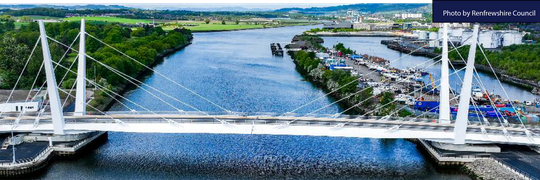Great Dover Street AI Speed Trial
The monitoring of vehicle volumes and speeds (TSV) is standard practice for data collection companies. These are an integral part to most traffic modelling software and are needed for transport planning purposes for new altered junctions.
The data presented here has shown that Tracsis’ AI Portal is able to accurately capture TSV data for temporary surveys, and within 95% of other fixed methodologies that are currently in use. Considerations need to be made to the survey locations to reduce masking of vehicles, such as keeping the survey location away from bus stops and layby’s. This type of technology offers Highway Authorities an alternative to pneumatic tube (not approved for use by TfL on its roads), and offers a full set of classifications as well as supporting video evidence when compared to radar methodology. This helps TfL to help us to deliver on key objectives such as active travel schemes, low traffic neighbourhoods and enable quick, safe and efficient data collection for ad-hoc monitoring of traffic data across the London network.
The monitoring of vehicle volumes and speeds (TSV) is standard practice for data collection companies, these are an integral part to most traffic modelling software and are needed for transport planning purposes for new altered junctions.
TSV counts are traditionally undertaken using automatic technologies such as pneumatic tubes, and radar for temporary surveys or inductive loops for permanent surveys. These technologies have traditionally been used due to their cost efficiencies, however there are several limitations associated with these survey types (Table 1).

As camera and AI technology have developed, there are new opportunities for alternative technologies to be developed to improve data quality and allow data to be collected from roads where the traditional methods cannot be used, e.g. high speed roads or where the cost of traffic management outweighs the cost-benefit ratio of a project. By utilising the same AI technology seen in fixed AI sensors, Tracsis Traffic Data (TTD) can offer a separate, proprietary solution where video footage of any site can be post-processed through the system and accurately capture volume and speed of all vehicle classes as well as pedestrians and cyclists. In this case study Tracsis Traffic Data (TTD), along with Transport for London (TfL) and VivaCity Labs (VivaCity) undertook a trial on an urban 20mph road to test the ability of AI to accurately obtain TSV data against a permanently fixed sensor (VA) and, an induction loop (ATC). A separate, independent manual count was undertaken on site by TfL staff during the test period to provide manual validation of the data collected.
Results
Vehicle flows
Results from the vehicle flows were promising and showed a good correlation between all 3 methods. A correlation coefficient between the three methodologies of between 0.94 and 1 was observed meaning that all three methodologies very closely aligned with each other. Differences observed were likely to be due to masking of vehicles. A short 2-hour manual survey was undertaken by TfL and as can be seen in Figure 2 this closely aligns with the data produced from all 3 survey methods.
For northwest bound traffic there was a slight discrepancy in the flows counted by the AI methodology (Figure 2). This was caused by the proximity of the camera to a layby that OGV1 and OGV2 vehicles would use in the morning to deliver stock to local stores. This was an atypical site for camera installation due to the masking that can occur, however it was accepted for this to allow a better comparison with the fixed locations of the ATC and VA. As soon as the vehicle leaves the site around 08:00 you can see an instant improvement in the counts and the AI very closely matches the VA and ATC count for the rest of the day.

Speed Surveys
Like the volume surveys, the speed surveys (Figure 3) also showed a good correlation between all 3 methods with the AI speed shown to be around 95% accurate to the ATC and VA surveys. For the ATC, VA, and AI in the southeast bound direction the average speed (+/- standard deviation) was 23.9mph (+/-1.36mph), 23.5mph (+/-1.15mph) and 25.4mph (+/-1.36mph) respectively. Slight differences were observed between the 3 methods which is likely due to the slight difference in point of capture for all 3 methodologies. The AI captures the speed over a set distance (in this case 18m), which means vehicles have a greater distance over which to speed up or slow down resulting in slight differences in the speed between the methodologies. For the northwest bound data (ATC 22.9mph +/- 1.27mph; VA 24.3mph +/- 1.36mph; AI 26.9mph +/- 2.50mph) there was a spike in the average speed which correlates with the decrease in counts caused by the delivery trucks parking in the layby, reducing the number of vehicles that could be detected and likely causing some interference in the collection of speed data.




